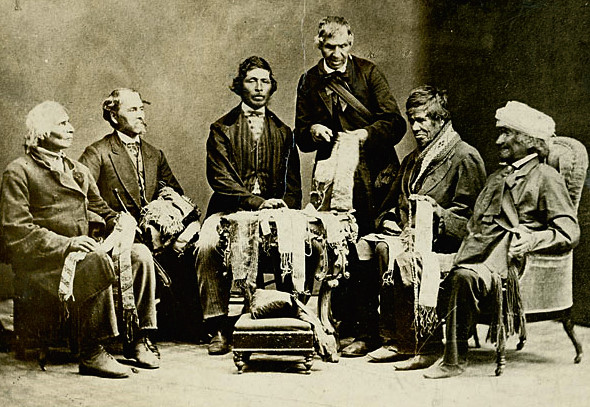|
The Legend Of Qu'appelle Valley
"The Legend of the Qu'Appelle Valley" is a poem written by Emily Pauline Johnson that tells the tale of a young First Nations' man who, upon returning from a hunting trip and anxious to be home where his betrothed awaits him, hears a voice, soft and tenderly, saying his name. He replies, "Qu'Appelle?", or, in French, "Who calls?", but receives no answer, save his own echo. When he arrives to his village he discovers that the young woman he was to marry died suddenly, and with her dying breath cried out his name. And thus, the Qu'Appelle Valley received its name. Although fictional, this story is based upon the unusual phenomenon reported by Métis trader Daniel Harmon, in which the Indigenous people of the area, whenever they heard (or thought they heard) a voice would reply: "Kâ-têpwêt?", "Who calls?", or "Qui appelle?", in Cree, English, and French respectively. ReferencesCanada Library and Archives [...More Info...] [...Related Items...] OR: [Wikipedia] [Google] [Baidu] |
Pauline Johnson
Emily Pauline Johnson (10 March 1861 – 7 March 1913), also known by her Mohawk stage name ''Tekahionwake'' (pronounced ''dageh-eeon-wageh'', ), was a Canadian poet, author, and performer who was popular in the late 19th and early 20th centuries. Her father was a hereditary Mohawk chief of mixed ancestry and her mother was an English immigrant. Johnson—whose poetry was published in Canada, the United States, and Great Britain—was among a generation of widely-read writers who began to define Canadian literature. She was a key figure in the construction of the field as an institution and has made an indelible mark on Indigenous women's writing and performance as a whole. Johnson was notable for her poems, short stories, and performances that celebrated her mixed-race heritage, drawing from both Indigenous and English influences. She is most known for her books of poetry ''The White Wampum'' (1895), ''Canadian Born'' (1903), and ''Flint and Feather'' (1912); and her collecti ... [...More Info...] [...Related Items...] OR: [Wikipedia] [Google] [Baidu] |
Indigenous Peoples Of The Americas
The Indigenous peoples of the Americas are the inhabitants of the Americas before the arrival of the European settlers in the 15th century, and the ethnic groups who now identify themselves with those peoples. Many Indigenous peoples of the Americas were traditionally hunter-gatherers and many, especially in the Amazon basin, still are, but many groups practiced aquaculture and agriculture. While some societies depended heavily on agriculture, others practiced a mix of farming, hunting, and gathering. In some regions, the Indigenous peoples created monumental architecture, large-scale organized cities, city-states, chiefdoms, states, kingdoms, republics, confederacies, and empires. Some had varying degrees of knowledge of engineering, architecture, mathematics, astronomy, writing, physics, medicine, planting and irrigation, geology, mining, metallurgy, sculpture, and gold smithing. Many parts of the Americas are still populated by Indigenous peoples; some countries have ... [...More Info...] [...Related Items...] OR: [Wikipedia] [Google] [Baidu] |
Qu'Appelle River
The Qu'Appelle River is a river in the Canadian provinces of Saskatchewan and Manitoba that flows east from Lake Diefenbaker in south-western Saskatchewan to join the Assiniboine River in Manitoba, just south of Lake of the Prairies, near the village of St. Lazare. It is located in a region called the Prairie Pothole Region of North America, which extends throughout three Canadian provinces and five U.S. states. It is also within Palliser's Triangle and the Great Plains ecoregion. With the construction of the Qu'Appelle River Dam and Gardiner Dam upstream, water flow was significantly increased and regulated. Most of the Qu'Appelle's present flow is actually water diverted from the South Saskatchewan River. Upper and lower watersheds According to the Saskatchewan Water Security Agency, the Qu'Appelle Valley is made up of two watersheds with the dividing point being Craven Dam on the east side of Craven: Lower Qu'Appelle Watershed The Lower Qu'Appelle Valley is locate ... [...More Info...] [...Related Items...] OR: [Wikipedia] [Google] [Baidu] |

_2007.jpg)
